#ancient coins
Text

Stater, minted 380/379 BCE at Tarsus in Cilicia, of Pharnabazus II, former satrap of Hellespontine Phrygia under the Achaemenid dynasty of Persia and a major figure in the internecine conflicts of the Greek city-states during the late 5th/early 4th centuries. The coin shows the complex intermingling of Greek and Near Eastern cultures characteristic of Anatolia under Achaemenid rule. On the obverse, Ba'al of Tarsus is shown seated, holding a lotus-tipped scepter and wearing the Greek chlamys. On the reverse, a bearded man wears a helmet in Attic style. Both sides are inscribed in Aramaic, which served as the lingua franca of the Near East under the Achaemenids. Photo credit: Classical Numismatic Group, Inc. http://www.cngcoins.com
#history#ancient history#classics#tagamemnon#Persian Empire#Achaemenid#coins#ancient coins#Persian coins#numismatics#ancient numismatics#artifacts#artefacts
68 notes
·
View notes
Text

~ Coin, Tetradrachm: A. Head of Athena, three olive leaves on the helmet; B. AΘE
Country/Issuer: Ancient Greece, Attica Athenes
Date: 5th century B.C.
Medium: Silver
#ancient#ancient art#history#museum#archeology#archaeology#ancient history#coin#ancient coins#money#numismatics#athens#attica#ancient greece#greece#ancient greek#tetradrachm#athena#silver#5th century B.C.
2K notes
·
View notes
Text
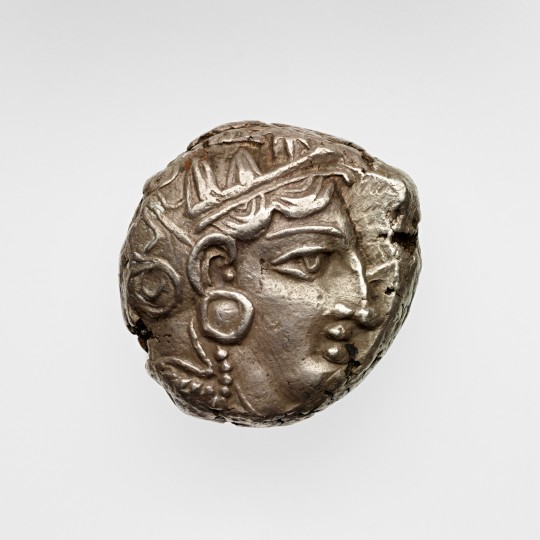
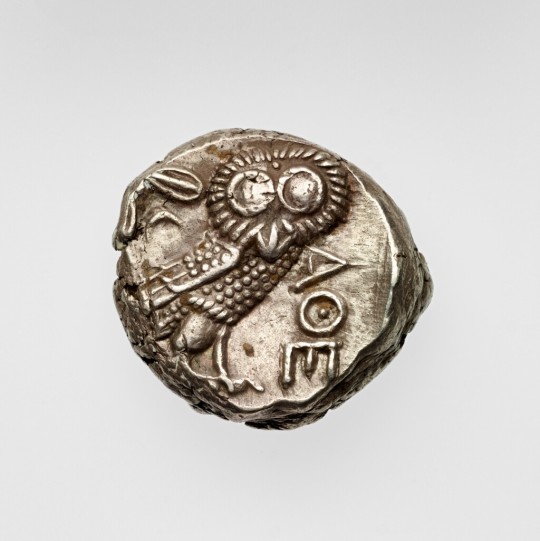
Silver tetradrachm, Athens, Greece, circa 525-430 BC
from The J. Paul Getty Museum
425 notes
·
View notes
Text

A Tale of Two Coins - 2000 years apart!
On the right is a Judea Capta coin from 71 AD, 1952 years ago. The coin says “Judea conquered" in latin. These were commemorative coins originally issued by the Roman Emperor Vespasian to commemorate the capture of Judea and the destruction of the Jewish Second Temple by his son Titus in 70 CE during the First Jewish Revolt. On one side of the palm tree is a weeping defeated Jewish woman. On the other a victorious Roman soldier.
On the left, we see the same palm tree representing the Jewish homeland, but instead of a Roman soldier, there is a Jewish woman holding a baby up to the heavens symbolizing the rebirth of the Jewish people like a phoenix out of the ashes. In place of the weeping woman is a Jewish farmer (her husband) planting new roots for the Jewish people in the Jewish homeland. Instead of “Judea Capta'' the words read - “Israel Liberated 1948″.
These two coins sum up the history of exile and return of the indigenous Jews to the Kingdom of Israel.
In the prophetic words of the Bible: “They who sow in tears shall reap in joy.” (Psalm 126)
#secular-jew#israel#jewish#judaism#israeli#jerusalem#diaspora#secular jew#secularjew#islam#coins#ancient coins#judean coinage#judea#samaria#romans#judea capta#vespasian#titus#emperor#roman empire#Israel liberated#1948#hamas#coinage#second temple#1st century#palestine#Palestinian#gaza
366 notes
·
View notes
Text
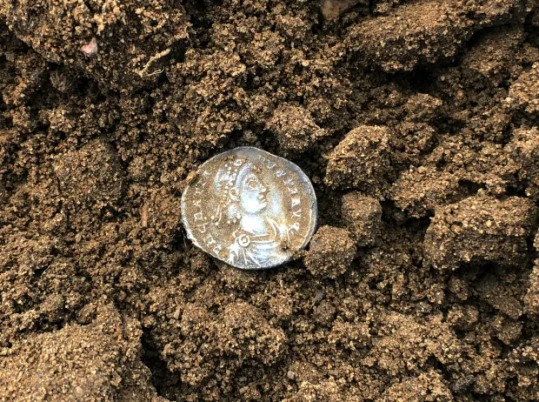
Roman Coin Hoard Found in England Sells at Auction
A hoard of Roman coins discovered by a metal detectorist scouring farmland has fetched more than £15,000 after going under the hammer.
More than 430 coins were found buried in the village of Colkirk, near Fakenham, Norfolk.
A collection of 73 pieces, including an extremely rare coin featuring a phoenix on a globe, was auctioned in London.
The anonymous finder had shown "perseverance", said coin specialist Nigel Mills, from Noonans auctioneers.
"Some of the people I've spoken to recently, who have found some amazing finds, are spending a lot of time detecting - hours and hours - and they don't give up," he said.

"They keep going and that's the secret in so many things - don't give up, keep looking."
The Colkirk hoard, believed to date back to the early 5th Century, was spread out across a third of an acre on arable farmland, although the majority of finds were discovered in a 1.5m (59in) radius.
It was a lucky find for the detectorist, who had no idea the soil held such treasures.
They were out searching a field in January 2020 when they spotted a silver coin, which they recognised as a siliqua - a small, thin Roman coin.
It sparked a haul of 40 coins that day, with a further 40 found on the following one.
Covid lockdowns meant searches became more sporadic, but each discovery was logged with a portable GPS unit to accurately pinpoint the hoard's distribution.
In all, 315 coins were found in 2020, 114 in 2021 and three in 2022.
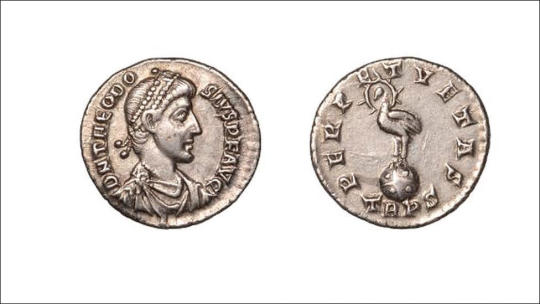
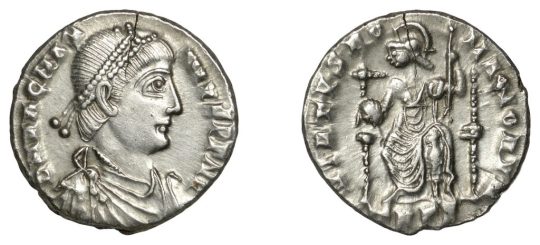
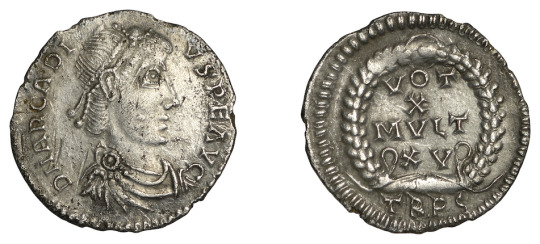
Some of the coins had been damaged, while others were fragmented due to farming processes.
A commemorative Third Miliarensis coin issued by Emperor Theodosius, decorated with a phoenix on one side, was only the fifth one of its type known to exist, with all the others in museums.
It reached £3,400 at the sale in Mayfair.
Mr Mills said: "The hoard had [been] spread out over a third of an acre through disturbance by ploughing and has been recorded under the Treasure Act.
"The hoard is likely to have been deposited at the beginning of the 5th Century AD, with the latest coin of Honorius dating no later than 402 AD.
"Other Roman treasure finds of gold and silver also from East Anglia, such as the Hoxne and Thetford hoards, reflect the wealth and importance of the area."

#Roman Coin Hoard Found in England Sells at Auction#village of Colkirk#metal detecting#coins#collectable coins#roman coins#ancient coins#ancient artifacts#archeology#archeolgst#history#history news#ancient history#ancient culture#ancient civilizations#roman history#roman empire#roman art
195 notes
·
View notes
Text
Coins of the Deified Augustus, 14-268 CE
The most fascinating thing about these types is how Augustus's portrait changes with the engraving style of the period as his portrait is sort of fused with that of the current emperor.

Divus Augustus Dupondius, struck under Tiberius.
A pretty much unaltered portrait of Augustus, something we won't be seeing often when it comes to these coins. Struck 22-23.

Divus Augustus under Tiberius, laureate head of Tiberius on obverse, laureate head of Augustus on reverse with star above. Struck 14-16.

Divus Augustus under Caligula, struck 37. Bare head of Caligula right on obverse, Radiate head of Augustus right on reverse, two stars to each side of bust.

Divus Augustus, struck in Spain(?) during the civil wars that took place between 68 and 69. Radiate head of Augustus on obverse. Pax standing left and holding a caduceus on reverse.
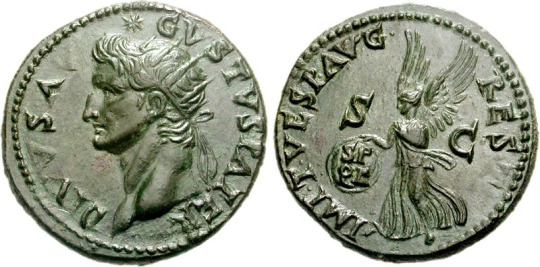
Divus Augustus under Titus (restitution issue that takes the design of that Tiberius Dupondius). Struck 80-81.

Divus Augustus As issued under Nerva (kind of a restitution issue, but not really) Struck 97-98. Eagle perched on thunderbolt on reverse.
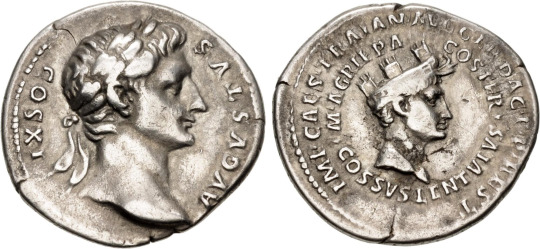
Under Trajan, another restoration issue of one of Augustus's denarii and technically not a Divus issue but I'm still putting here because I like it. Struck 107 or 112-113
Reverse depicts his bestie Agrippa

Cistophoric Tetradrachm struck under Hadrian, 128 (Augustus is literally just a beardless Hadrian here) Reverse depicts Hadrian holding some corn ears.

Skipping forward quite a bit, Divus Augustus Antoninianus issued under Trajan Decius as a part of his "Divus" series of coins. Reverse depicts a lit altar. Struck 249-251.
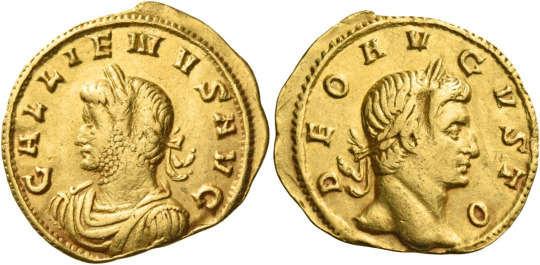
Deo Augusto issue, this one is really interesting as it is *theorized* that this was struck as a way to ask for aid from Augustus the god during Gallienus's disastrous reign. Struck 260-268.
#ancient coins#ancient rome#ancient art#ancient history#roman art#history#roman coin#roman coins#roman empire#roman emperor
78 notes
·
View notes
Text

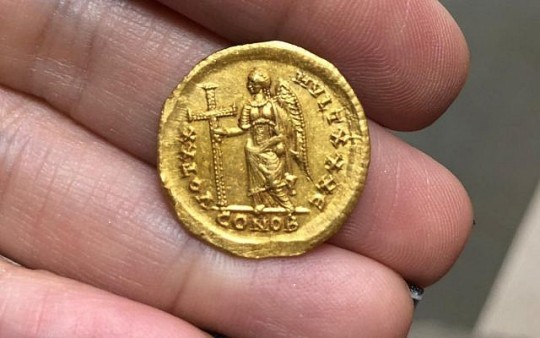
Gold coin from the reign of Emperor Thedosius II uncovered in Israel in 2019, Eastern Roman Empire, circa 401-450 AD
423 notes
·
View notes
Text



An example of the Damnatio Memoriae decreed on Gaius Caligula on the coins bearing his image. Many of Caligula's coins were withdrawn after his murder and restruck, while others were defaced. Damnatio Memoriae didn't mean that all the traces of the individual were erased, only the ones that showed him in a positive light.
#ancient rome#caligula#emperor gaius#gaius julius caesar germanicus#coins#ancient coins#damantio memoriae#ancient roman coins#julio claudian dynasty
63 notes
·
View notes
Text
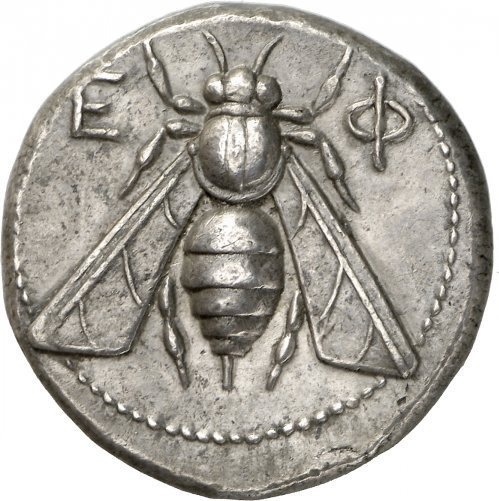

Bee Coin From Ephesos, Ionia, C. 390-325 BC.
961 notes
·
View notes
Text

Fulvia AR denarius issued by Marcus Antonius. Rome mint, ca. 42 BC, 3.5 gm, 17.0 mm. Ob. draped bust of Fulvia as victory. Rev. victory in biga holding reins of two horses. Inscribed, L MVSSIDIVS LONGVS
Mark Antony's 2nd wife Fulvia was the first roman woman to be portrayed on coins. Beautifully toned attractive portrait of Fulvia Flacca Bambula. Somewhat rough around the edges and the reverse struck slightly off center, otherwise, very fine.
#fulvia#mark antony#marcus antonius#numismatics#denarius#silver coins#roman coins#coins#ancient coins#ancient rome#rome#roman history#roman republic#roman empire
23 notes
·
View notes
Text
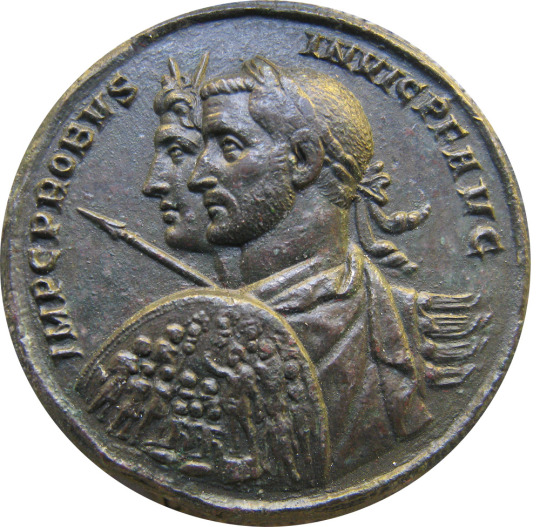
Coin minted ca. 280 CE by the Roman emperor Marcus Aurelius Probus (r. 276-282). Probus is shown in the company of Sol Invictus ("Unconquered Sun"), a late form of the solar deity whose worship had been promoted by Probus' predecessor Aurelian. The birthday of Sol Invictus (Dies Natalis Solis Invicti) was traditionally celebrated on Dec. 25. On this coin, Probus, who was constantly on campaign during his brief reign, is shown prepared for battle with shield and spear, alongside Sol Invictus, who wears his characteristic radiant crown. Now in the National Museum of Denmark, Copenhagen. Photo credit: ChrisO/Wikimedia Commons.
#classics#tagamemnon#Ancient Rome#Roman Empire#ancient history#Roman history#Probus#M. Aurelius Probus#Roman religion#Ancient Roman religion#religio Romana#Sol Invictus#art#art history#ancient art#Roman art#Ancient Roman art#Roman Imperial art#coins#ancient coins#Roman coins#Ancient Roman coins#numismatics#ancient numismatics#Roman numismatics#National Museum of Denmark
307 notes
·
View notes
Text
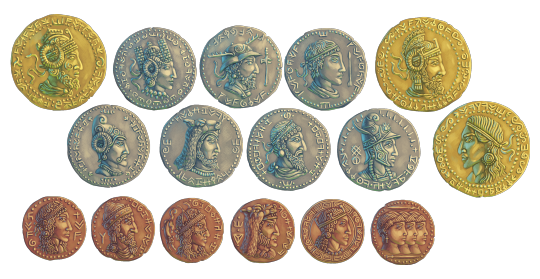
A set of coins depicting the Princes of Sartar and some of their notable family members - a WIP commissioned for Runequest
#artists on tumblr#digital art#illustration#ancient coins#fantasy#glorantha#runequest#fantasy art#ttrpg art
79 notes
·
View notes
Text

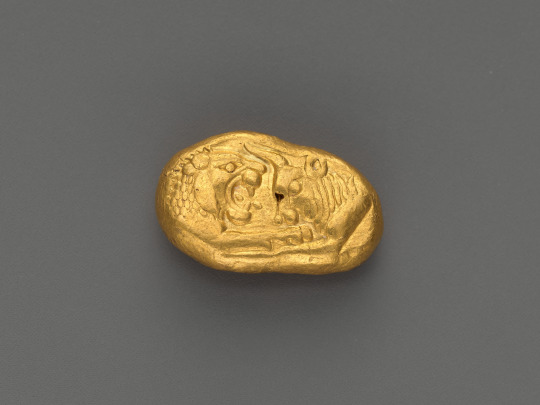
Collection of gold staters, Lydia, 560-540 BC
from The Metropolitan Museum of Art
694 notes
·
View notes
Text
Okay, there was some interest in seeing my ancient coin collection! So I'm going to share some of them (not all because Tumblr has its limits.
I'm going to focus on ancient ladies both real and mythological. Plus one coin of a guy riding a dolphin! Beneath the cut.
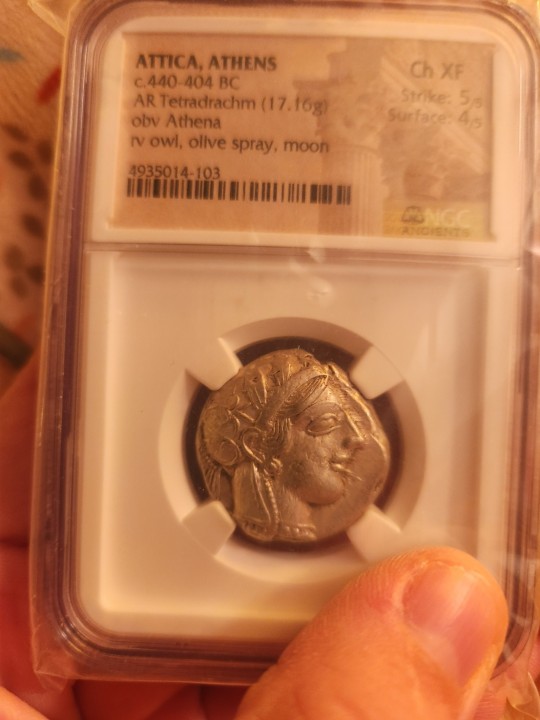

First, a couple of mythical ladies. Athena on the left, the nymph Larissa on the right.
Now a bunch of Roman ladies, mostly the wives of emperors.

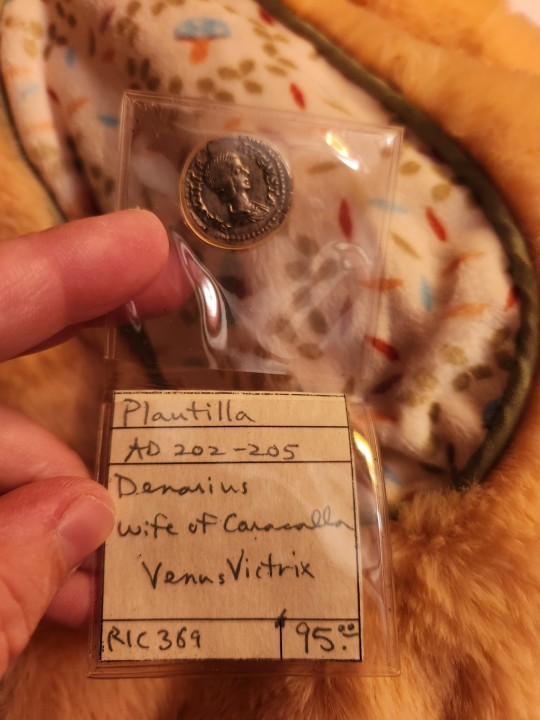


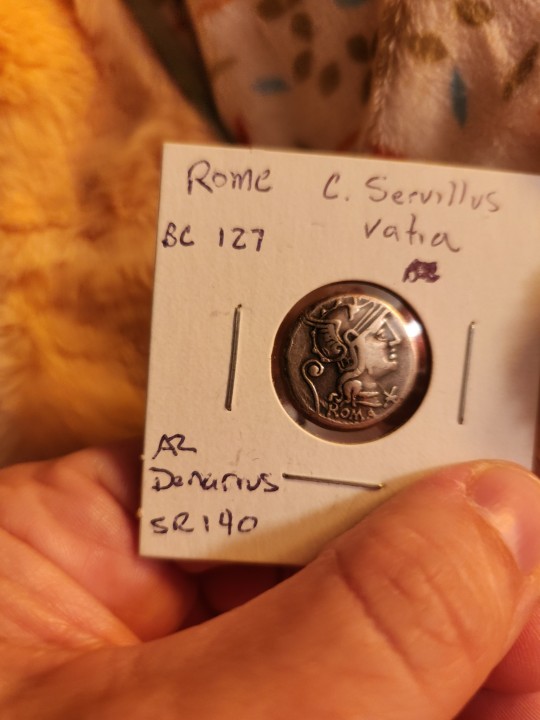
Lastly, a guy riding a dolphin. He got rescued from a shipwreck and founded a city where the dolphin brought him to land. The city put him on their coins.
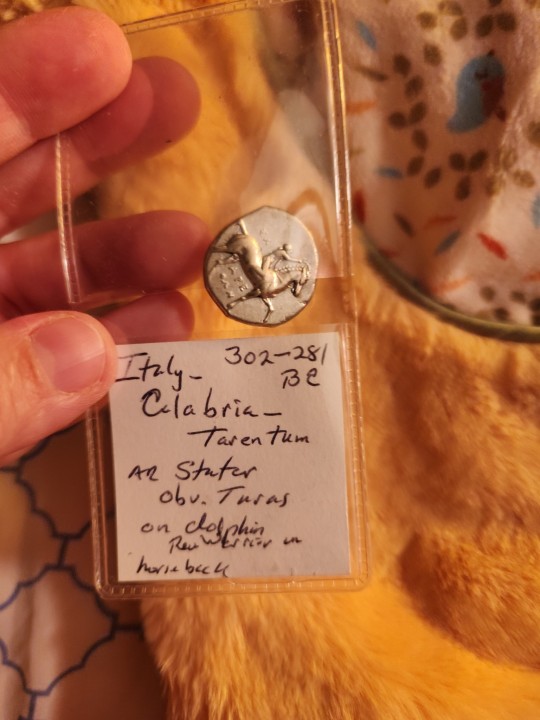

I have more but that's it for now.
@sarahlizziewrites and @aziz-reads
34 notes
·
View notes
Text
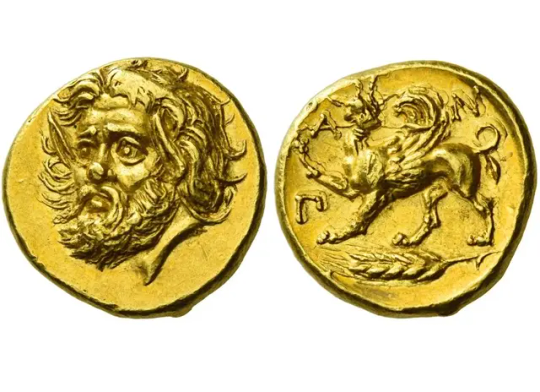
A 2,000-Year-Old Gold Greek Coin Sells for $6 Million at Auction
The coin once belonged to the State Hermitage Museum until it was sold off by Joseph Stalin.
A private collector has spent a pretty penny to get their hands on a 2,000-year-old gold Greek coin.
Known as a Panticapaeum stater, after the ancient Greek city in modern-day Crimea, the coin went for $6 million at Numismatica Ars Classica in Switzerland making it the most expensive ancient coin ever sold at auction.
The soaring price has been attributed to the coin’s quality, rarity, and the fact the supply of similar specimens is extremely limited with most already housed inside museums.
“I am extremely pleased with the phenomenal result the sale of the Panticapaeum stater achieved at our latest auction in Zurich,” Arturo Russo, co-director at Numismatica Ars Classica, said in a statement. “This is a sign the whole market for numismatics is flourishing, and is especially strong for ancients at the moment.”
The coin was minted circa 340–25 B.C.E. and features a wide-eyed satyr on the obverse and that of a griffin gripping a spear in its beak on the reverse. The presence of the satyr, a mischief-maker in Greek mythology that resembles a man with horse ears and a tail, is thought to reference king Satyros I, who ruled a Greco-Scythian empire in eastern Crimea from 432 to 389 B.C.E.
The sharp details make numismatists confident the coin is the work of a master engraver. Unlike similar coins, this Panticapaeum stater features the satyr facing three-quarters to the left, as opposed to facing fully left, a detail experts believe was altered in an attempt to follow contemporary fashions.
The coin was long part of the State Hermitage Museum’s collection, but was sold off in 1934 as part of Stalin’s push to sell works of art to raise foreign currency to fund domestic industrial growth. The coin was acquired by Charles Gillet, a French industrialist who focused on collecting rare books, furniture, and antiquities, including coins.
The previous record for most expensive ancient coin sold at auction was one of only three known “Ides of March” coins, which was minted in 42 B.C.E. and commemorated the assassination of Julius Caesar. It sold at Roma Numismatics auction house for $4.2 million in 2020, though, as it turned out, with falsified provenance.
By Richard Whiddington.

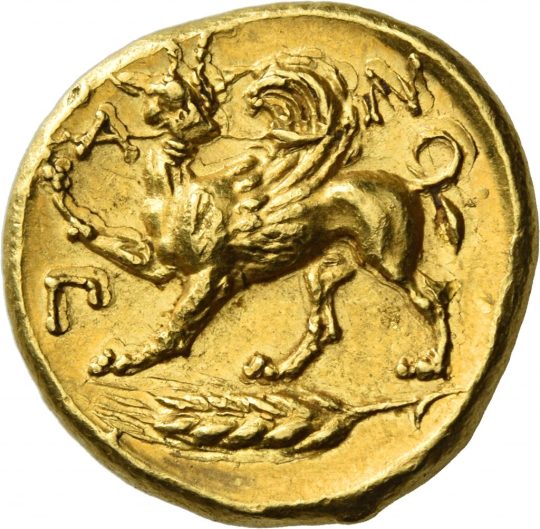
#A 2000-Year-Old Gold Greek Coin Sells for $6 Million at Auction#Panticapaeum stater#king Satyros I#gold#gold coin#ancient coins#ancient artifacts#archeology#archeolgst#history#history news#ancient history#ancient culture#ancient civilizations#ancient greece#greek history#greek art
46 notes
·
View notes
Text
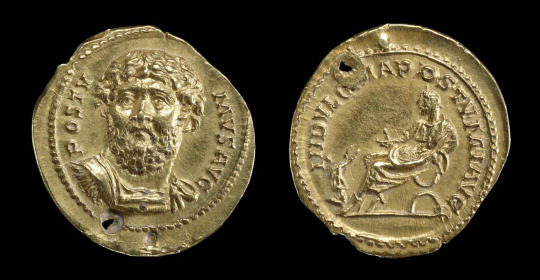
Beautiful Aureus featuring a rare 3/4 Facing bust of Postumus, reverse features Postumus seated, suppliant before him.
71 notes
·
View notes